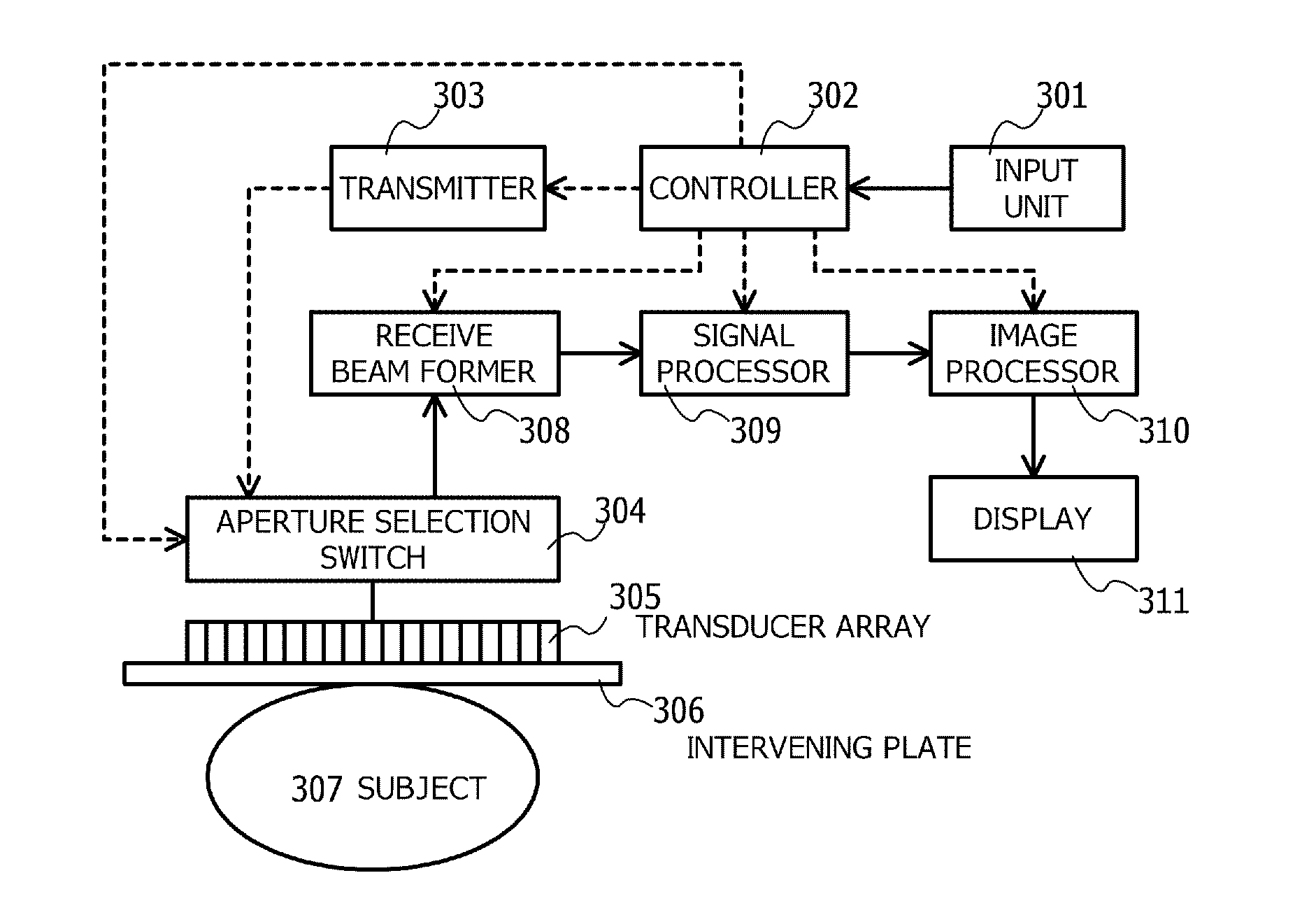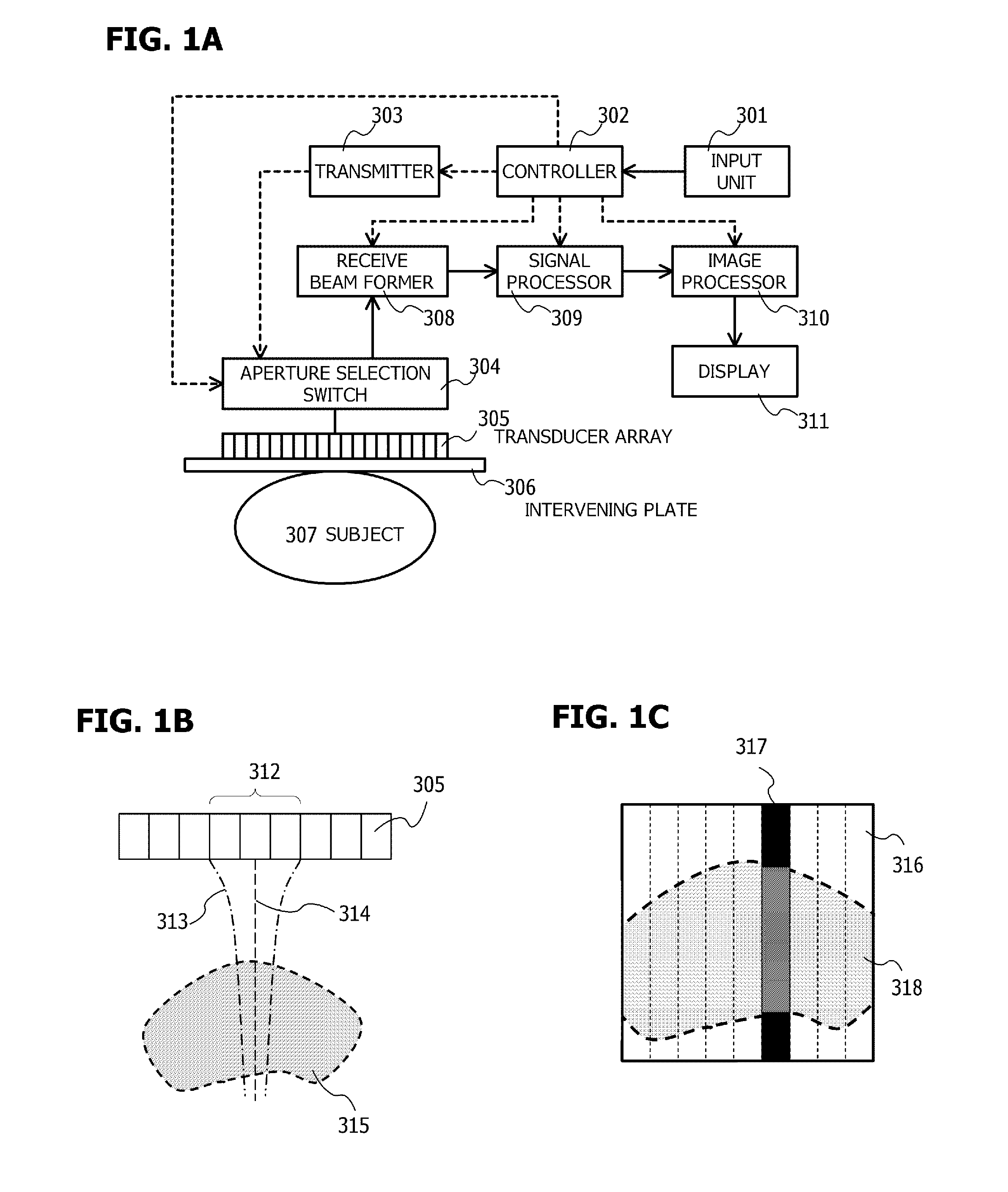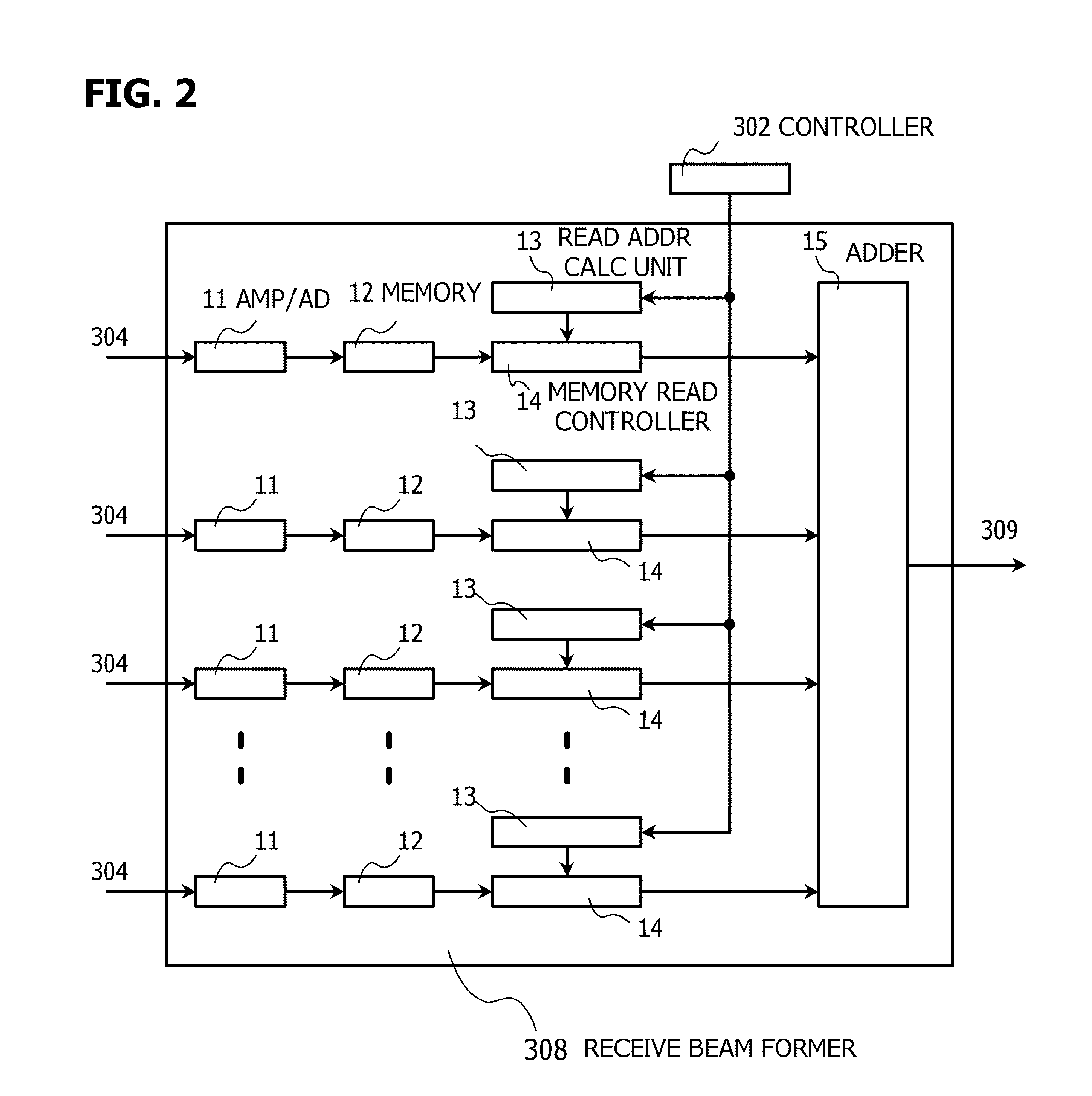Ultrasonic imaging apparatus and method of controlling delay
a technology of ultrasonic imaging and delay, applied in the field of ultrasonic imaging apparatus, can solve the problems of increasing circuit scale, increasing apparatus cost, and huge circuit scale, and achieve the effects of simplifying explanation, convenient installation, and easy packaging
- Summary
- Abstract
- Description
- Claims
- Application Information
AI Technical Summary
Benefits of technology
Problems solved by technology
Method used
Image
Examples
example 1
[0095]A case of applying the present invention to an ultrasonic image diagnostic apparatus will now be described in detail using an example.
[0096]An ultrasonic image diagnostic apparatus (ultrasonic echo diagnostic apparatus) according to this example will now be described with reference to FIG. 1.
[0097]FIG. 1A shows a configuration of an ultrasonic imaging apparatus according to this example. FIG. 1B shows an ultrasonic beam used in the ultrasonic imaging apparatus according to this example. FIG. 1C shows an image or image data generated by the ultrasonic imaging apparatus corresponding to the ultrasonic beam shown in FIG. 1B.
[0098]In FIG. 1A, reference numeral 301 indicates an input unit, 302 indicates a controller, 303 indicates a transmitter, 304 indicates an aperture selection switch, 305 indicates a transducer array, 306 indicates an intervening plate, 307 indicates a subject, and 308 indicates a receive beam former. 309 indicates a signal processor, 310 indicates an image pro...
example 2
[0162]Example 2 of the present invention is an ultrasonic imaging apparatus based on a photoacoustic imaging method using photoacoustic waves. According to the photoacoustic imaging method, an internal structure of the subject is imaged by irradiating a pulse layer beam onto a subject, and detecting an ultrasonic wave, which is a photoacoustic wave induced by thermal expansion.
[0163]A concrete procedure of the photoacoustic imaging method is disclosed as follows, in the Japanese Patent Application Publication (Translation of PCT Application) No. 2001-507952, for example.
[0164](1) A two-dimensional transducer array (two-dimensional receiving element array) is positioned on the subject surface, and single pulsed electromagnetic energy is irradiated onto the subject.
[0165](2) A receive photoacoustic signal of each transducer (each receiving element) is sampled and stored immediately after irradiation of the electromagnetic energy.
[0166](3) Propagation time for the photoacoustic wave to...
PUM
 Login to View More
Login to View More Abstract
Description
Claims
Application Information
 Login to View More
Login to View More - R&D
- Intellectual Property
- Life Sciences
- Materials
- Tech Scout
- Unparalleled Data Quality
- Higher Quality Content
- 60% Fewer Hallucinations
Browse by: Latest US Patents, China's latest patents, Technical Efficacy Thesaurus, Application Domain, Technology Topic, Popular Technical Reports.
© 2025 PatSnap. All rights reserved.Legal|Privacy policy|Modern Slavery Act Transparency Statement|Sitemap|About US| Contact US: help@patsnap.com



